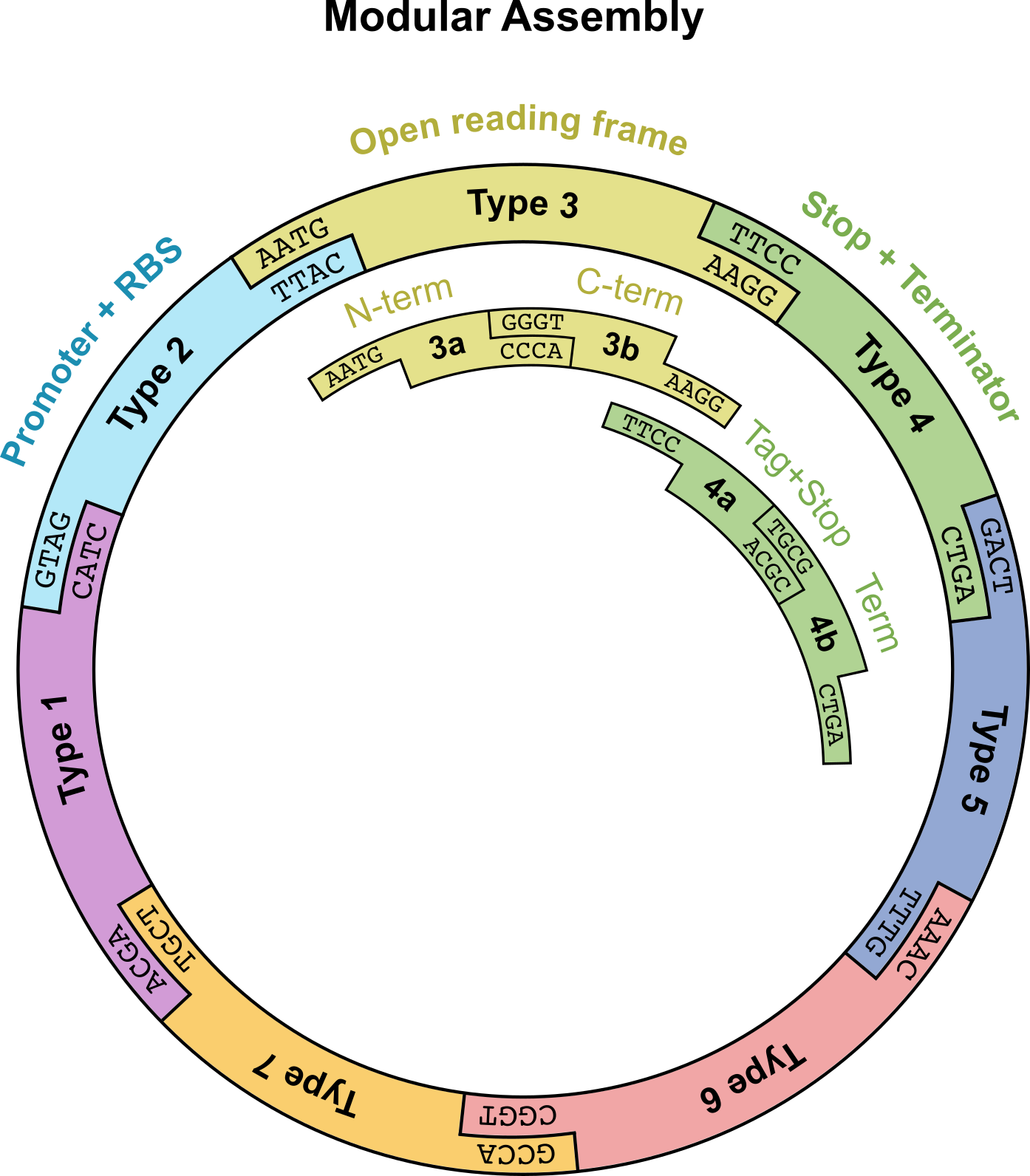
Modular assembly using DNA toolkits
Golden Gate cloning facilitates modularity, reuse, and speed
Share with us your generalized experimental workflow along with DNA sequences you'll be working with, and we will work with you to build a DNA toolkit that encourages efficient reuse of DNA parts in future projects while leveraging the benefits of Golden Gate cloning for efficient modular assembly of circular plasmids. Golden Gate cloning uses unique DNA overhangs to assemble DNA parts into plasmids in a defined order.
The DNA toolkit is a collection of parts that are each cloned into a standard entry vector, generating what we call a Basic Part plasmid; these Basic Part plasmids are sequence-verified clonal stocks that can be stored and propagated indefinitely for use in plasmid construction.
Building a DNA toolkit and reusing DNA parts has both economical and speed benefits: you save on DNA synthesis costs in the long run, and also reduce plasmid build times since the parts are ready on hand. Your DNA toolkit can be developed for applications that range from simple to complex. See the examples below for how DNA toolkits can support construction of plasmids of increasing complexity.
Example: 2-part assemblies
A two-part assembly represents the simplest type of modular assembly. An example is cloning different ORFs into multiple possible expression vectors for e.g. protein expression or purification.
Example: 7-part assemblies
More complex assemblies can be supported by the DNA toolkit, such as a 7-part assembly that might include the ability to permute multiple elements, including the promoter, terminator, selection markers, and origins of replication.
Example: multi-gene assemblies
Multi-gene assemblies are an example of a complex construct that can be assembled with a properly designed DNA toolkit. In this application, intermediate assembly plasmids are first constructed and then used to make the final assembly.





